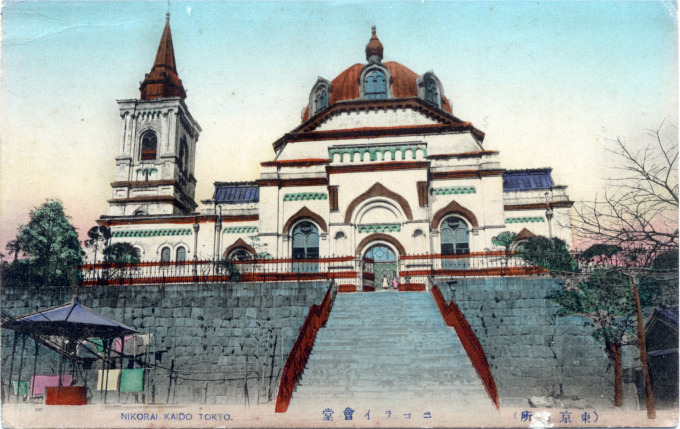
The pre-1923 Nikolai Cathedral. Its 125-foot high dome would collapse after being struck by the bell tower spire (left) during the 1923 Great Kanto Earthquake. The pyramidal spire would be replaced by a shorter conical spire.
“The year of 1891 was doubtless the most glorious in the history of the Japanese Orthodox church, for in March the Tokyo Cathedral of Resurrection, the Nikolai-do, was completed at last. It took nearly seven years and cost as much as 240,000 yen – a vast sum in those days.
“… Because Surugadai Hill, on top of which the cathedral was constructed, was one of the highest points in the capital, Nikolai’s cathedral can be seen from virtually any spot in Tokyo.
“Some people, especially of the right-wing persuasion, regarded the cathedral as a symbol of disrespect to the Japanese emperor. [But] soon, the building, with its Byzantine architecture and pealing bells, acquired popular renown and became a favorite of poems and paintings.”
– A Hidden Fire: Russian and Japanese Cultural Encounters, 1868-1926, edited by J. Thomas Rimer, 1995
St. Nicolas of Japan (baptized Ivan Dmitrievich Kasatkin) brought Orthodox Christianity to Japan in the mid-19th century, just as the Tokugawa regime began losing power and influence.
In 1861 he was sent by the Russian Orthodox Church to Hakodate, Hokkaidō as a presbyter to a chapel of the Russian consulate. Though the contemporary Shogun’s government prohibited Japanese conversion to Christianity, some neighbors who frequently visited the chapel converted in 1864 — Nicolai’s first three converts in Japan.
Apart from brief trips Nicolas stayed in Japan, even during the Russo-Japanese War (1904–1905). He proclaimed Orthodox Christianity nationwide, and was appointed as the first bishop of the Japanese Orthodox Church. He moved his headquarters from Hakodate to Tokyo around 1863. In 1886 the Japanese Orthodox Church had over 10,000 baptized faithful. When he died, in 1912, Nicolas left behind 34,000 believers, 276 churches, eight small cathedrals and one grand cathedral that would become his namesake.
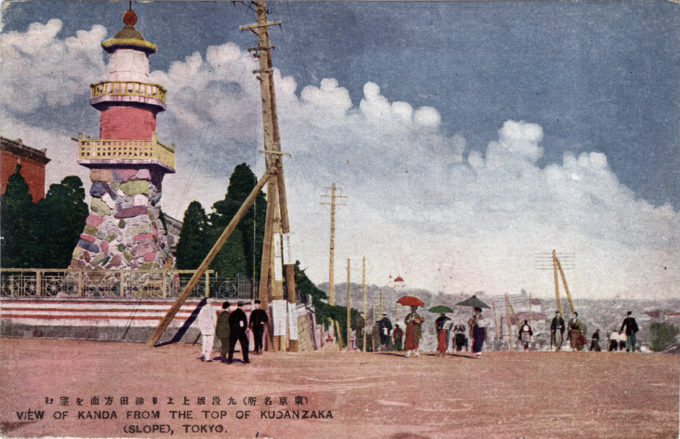
Kudanzaka, c. 1920, with the Nikolai Cathedral at Ochanomizu dominating the horizon in the distance.
Holy Resurrection Cathedral, also known as Nikorai-kaido, became the main cathedral of the Japanese Orthodox Church. Designed by British architect Josiah Conder, using plans that came from St. Petersburg, Russia, the Cathedral was completed on March 8, 1891, near Ochanomizu, construction having begun seven years earlier.
Depictions of its exotic Byzantine architecture and the unique sound of its bell often appeared in literature and illustrations of the day. The cathedral stands high on a promontory, Surugadai, and could be seen (in the days before skyscrapers) from most anywhere in Tokyo. Its 125-foot high dome is often photographed from below to emphasize its majesty.
- Nikolai Cathedral, Ochanomizu, c. 1930.
- Nikolai Carthedral, c. 1930.
The original Cathedral was seriously damaged in the Great Kantō earthquake of September 1923. The main pyramidal-shaped bell tower fell onto the dome, collapsing it, thus causing major damage to the Cathedral. Rebuilding the cathedral became a major task for the then-ruling bishop, Archbishop Sergius (Tikhomirov), who had succeeded St. Nicolas after he died in 1912.
Since Russia was no longer a source of funding (because of the Bolshevik Revolution), Archbishop Sergius had to look for funding within Japan. A significant amount of funding was raised by numerous concerts by the Cathedral choir, led by Victor A. Pokrovsky. The restored Cathedral was re-consecrated in 15 December 1929, with a less ornate interior and a shorter modified conical bell tower, according to a design by Okada Shinichiro.


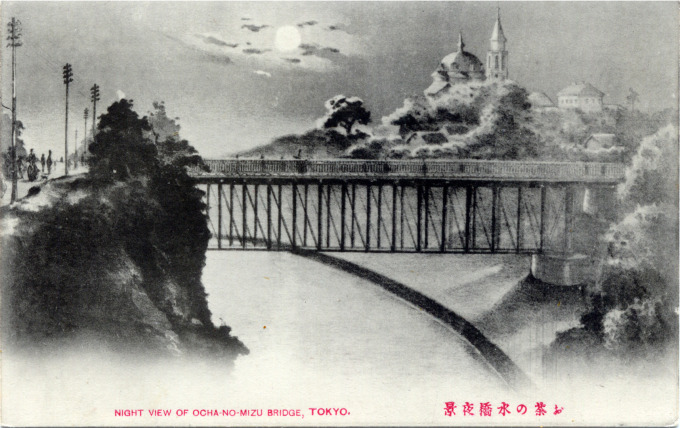
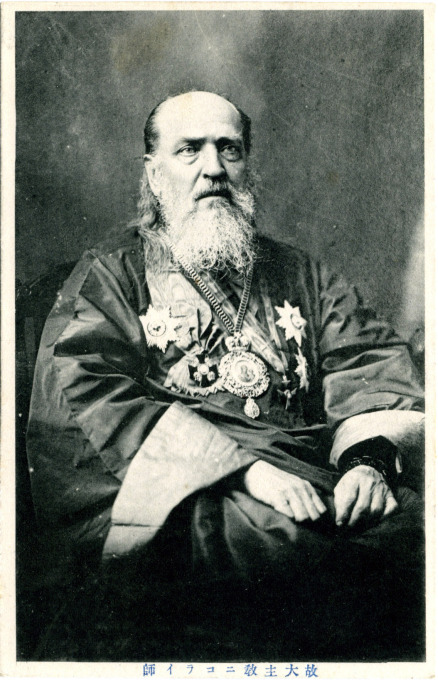
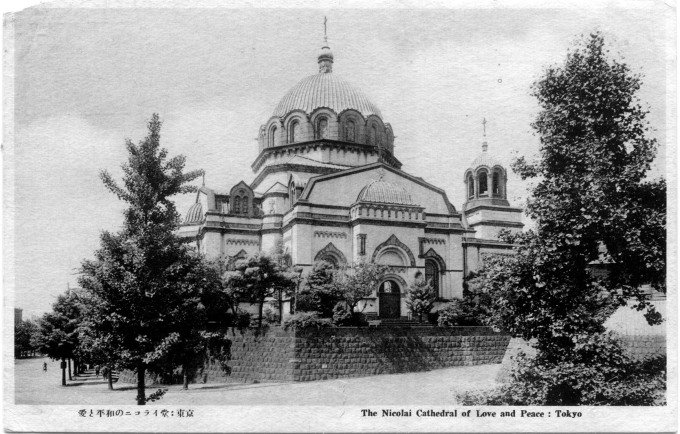
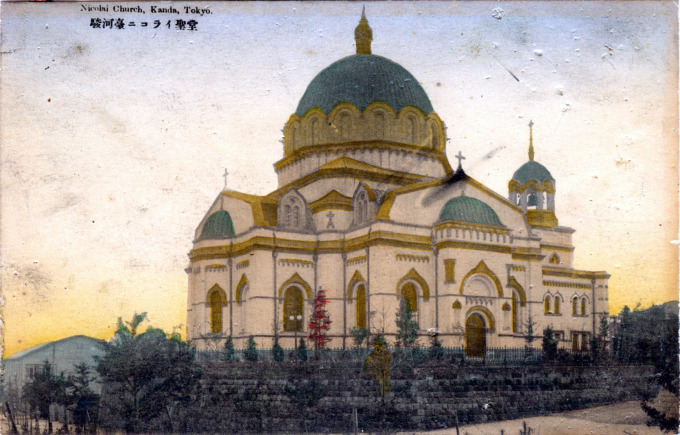
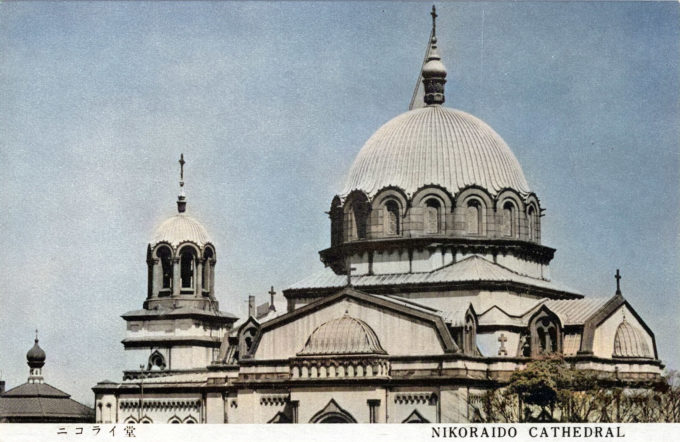
Pingback: View of Tokiwa Bridge befor [sic] the Bank of Japan, Tokyo, c. 1905 | Old Tokyo
Pingback: Josiah Conder: Department of the Navy, Kasumigaseki, c. 1910 | Old Tokyo
Pingback: Yasuda Auditorium, Tokyo University, c. 1930. | Old Tokyo
Pingback: Manseibashi Station (1912-1936). | Old Tokyo
Pingback: Hijiri Bridge, Ochanomizu, c. 1930. | Old Tokyo
Pingback: Ochanomizu Bridge, Ochanomizu, c. 1910-1920. | Old Tokyo
Pingback: Kokugikan (National Sport Hall). | Old Tokyo
Pingback: Gardens of Wealth: At Rikugien and Furukawa Are Layers of Tokyo History | JAPAN Forward